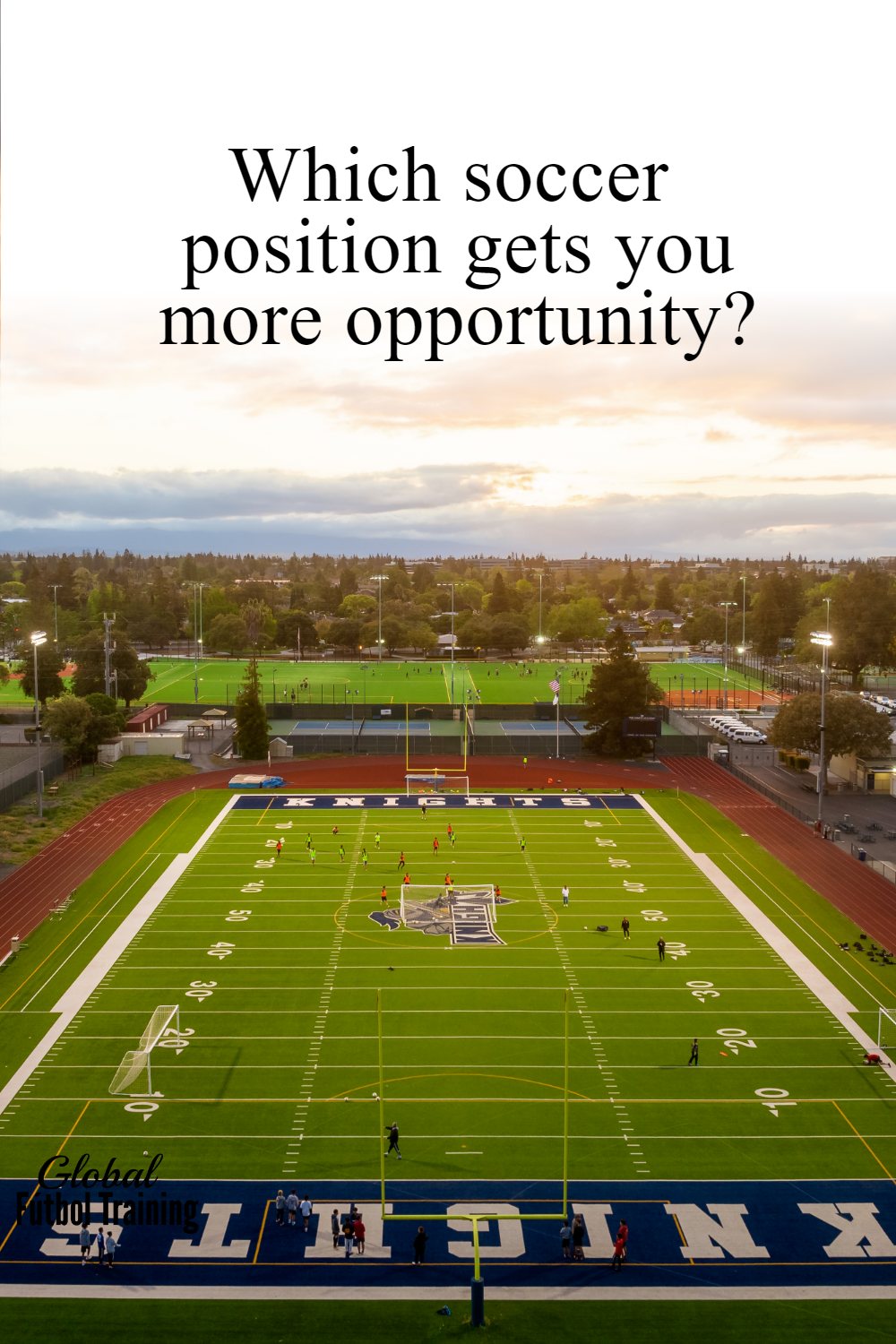I can still remember all my years playing college soccer, especially that first year. The reason the first year sticks out is because that is the hardest year. You are the youngest player, the level is harder, everything is new. I was recruited to play forward, but half way through my Freshman year our best defender got hurt. I went in as a center back and never came out from that day. Defender was my more natural position, so if I was playing high level it made sense. But growing up playing high school soccer, I was one of the fastest kids in the district, so playing forward made sense too because I could score goals.
Give yourself the best chance
It all depends on your situation, team, coach… I can’t say that for sure a certain position is going to be best, because that position might be a position that you can’t play.
The best thing you can do if you’re already on a team is look around and see which starters are the weakest links. Then let the coach know you can play different positions.
Work hard for it on your own by staying late after training. Know the difference of skillful vs technical – so you work on the right things.
Spend time watching world class players in Europe or even the best players in your league. See what they do right tactically and technically. These are smart things to do if you want to be a starter.
Outside back has most need
Left back is probably the most open available position condition-wise because there are just not many solid ones.
Whether youth or college soccer there is a good chance to get a spot on the team if you can be willing to play it. At the higher level some of the best outside backs grew up playing CM or Forward.
Speed and size are what coaches want besides smart defenders. If a defender has those 3 attributes plus receiving and passing skills they are set. Learn More.
You might be asking, does it have to be left back? Either right or left back are going to be good options for most of you.
You have to make that choice, and see which of the two sides gives you the best chance. This all depends on who you are competing for the position with. If your team already has a good left footed player who is also the best outside back, then they will play left back. This means you should go for right back. But then there might be only right footed players, so the coach is going to choose the best right footed person for the left back spot.

Be open to any position
At the end of the day it’s a team sport, so in my opinion be open to play any position.
Not only are you helping out the team, but you are getting more minutes on the pitch. Playing games is the best part, so if you have to be uncomfortable while learning a new position, then so be it. It will only make you an overall better player in the end.
The college soccer level for men and women is a very high level now.
High school soccer is the same in some parts of the US… There are so many good athletes that you have to put in the quality skills training and learn the small details like the topic in this article.
It’s always been a high level, but each year it just keeps getting stronger and deeper. Maybe the best players now are not as good as the best players 20 years ago, but the “weaker’ players now are a lot better than 10-20 years ago because the youth level is higher.
Technology helps wit this, because parents and kids are able to find more resources to improve their opportunity.
Pro level has the same need as college
From youth soccer to college soccer players want to score goals, so forward is the most natural position.
To this day, even on the USA Men’s National Team you will find players starting a certain position that is not even their strength.
If you remember in the 2014 World Cup, head coach Bruce Arena started DaMarcus Beasley. Beasley was a natural outside mid, but was played as an outside back in his 30’s. Why? Because there are not many good outside backs.
One of the best players you can watch at the outside back position is Dani Alvez. Brazilian right back who played for Barcelona and PSG. He is so good with the ball, keeping possession.
Good passing and first touch are the first things that stick out in my mind when I think of a good outside back. Then can you defend and run up and down the fields all game long?
You have to be a good defender, but most outside backs [pro level] are better with the ball, but they can also defend.
A coach would rather take a player who can handle the ball over a player who is a better defender, but can’t keep possession.
Our Most Popular Posts:
- 3 ways to strike the ball with power
- How to boost confidence in soccer
- 8 best 1st- touch drills
- Expert dribbling tips
- Goal side defending
Follow @GFTskills on Social Media






